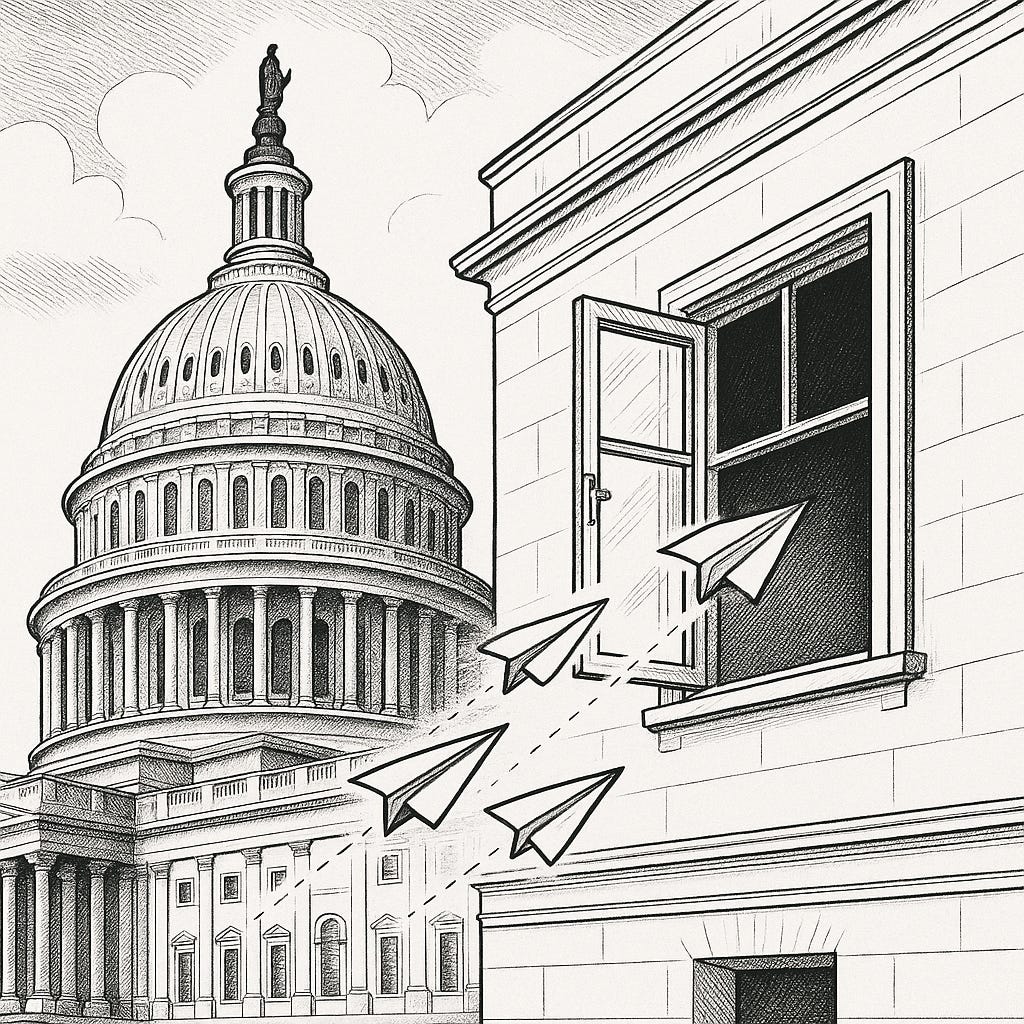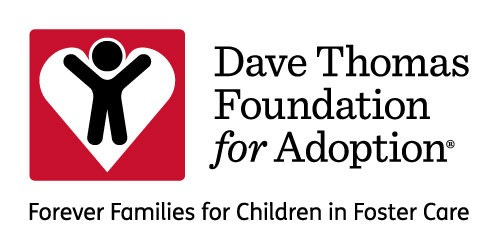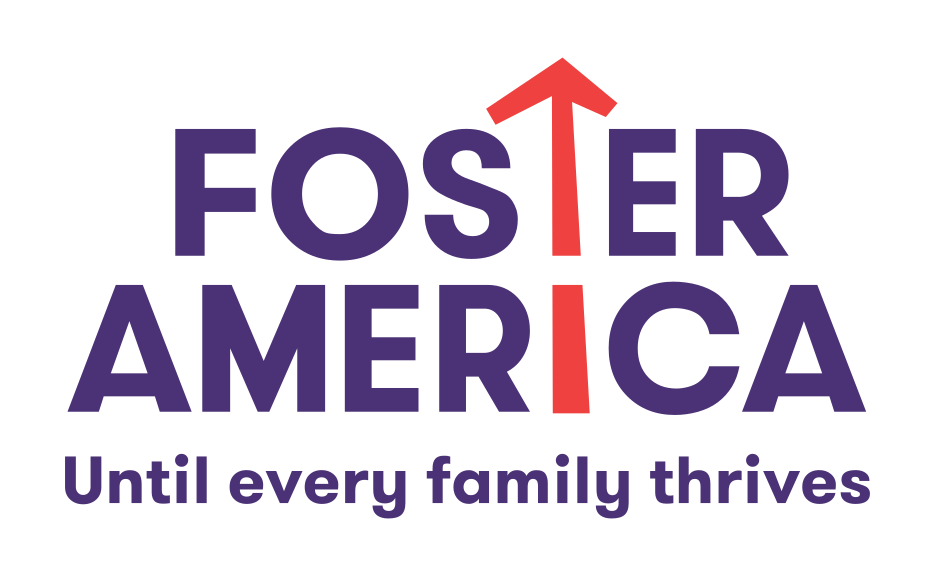Weekly Wonk: The Next Big Child Welfare Window
From the Founder’s Desk
This week is all about preparing for the next major child welfare policy window.
The opportunity to shape what it is and what it does is here.
Our deep dive this week shows how to read the signals around that opening window, and how to shape what it makes possible.
We also excerpt a premium brief looking at the stark variation in foster care entry rates across states.
If you haven’t already, be sure to listen to this week’s podcast episode with Lynn Johnson, former Assistant Secretary at the Administration for Children and Families during the first Trump Administration.
We spoke about her focus on economic mobility, her evolution from Head Start critic to champion, and her insights on ACF’s work under the second Trump administration.
I appreciated digging into the inherent challenges of defining a term as broad as prevention and its relationship to child safety, a theme WonkCast will keep exploring.
Special thanks to Binti for their foundational sponsorship of WonkCast.
Let’s get into it.
From the Wonk Briefing Room
Your preview of this week’s Wonk Briefing Room premium piece features a thought-provoking analysis by Laura Radel.
Using the latest AFCARS data dashboard, she asks a critical question: Do states follow similar patterns in placing children in foster care?
The answer is a resounding no.
She highlights key differences in age group trends, which are particularly relevant for any ongoing discussions about future policy, especially regarding older youth, a growing focus in D.C.
To get all our premium briefs, sign up for the Wonk Briefing Room here.
Which States Are Most Likely to Place Children in Foster Care?
By Laura Radel, Senior Contributor
Foster care is supposed to be reserved for situations in which a child’s safety can’t be secured any other way.
In recent years foster care entries have declined nationally (Williams et al, 2025).
Behind national trends, states vary dramatically in how frequently they place children in foster care, far more than seems likely based on differential safety risks to children.
National figures – dominated by states with the highest populations, including New York and California – obscure state-level variation.
However, the new AFCARS Dashboard makes it easier than ever to compare states on a range of metrics, such as how frequently children and youth are placed in foster care.
The variation among states is stark.
AFCARS data for 2024 show extreme variations in foster care placement rates per 1,000 children in the state’s general population, particularly for infants.
At the federal level, our focus on national trends hides informative differences among states.
For instance, are infants in Oklahoma really 3 times more likely to need foster care than infants in Texas?
Variation in safety factors are a start, but there’s likely a lot more that drives these differences – policy, practice, infrastructure and resource issues that underlie placement decisions.
To read the rest of the premium brief and get all our premium briefs, sign up for the Wonk Briefing Room here.
Weekly Wonk Deep Dive
Taking Advantage of the Next Policy Window
By Doug Steiger, Senior Contributor
The next federal policy window isn’t here yet — but the competition to shape it has already started.
Washington’s biggest swings for this cycle happened early, largely in the context of H.R. 1, which locked in the major fiscal and programmatic decisions this Congress is likely to make.
The downstream effects of the Medicaid cuts and other provisions will play out for years, but the decision points themselves are largely behind us.
Incremental bipartisan child welfare legislation is certainly possible over the next year, especially given the First Lady’s interest in foster youth as seen by the new executive order.
However, major changes appear unlikely.
If the child welfare community is going to advocate for a major needle-moving change in the next window, the groundwork has to happen before the window opens. Not after.
This is the moment to prepare.
The Next Window
Policy windows don’t appear fully formed — they’re framed before the politics shift.
It takes time for an idea to mature, gather allies, and earn enough credibility to be pulled off the shelf when a big vehicle moves.
By the time a massive package like H.R. 1 is assembled, only proposals that are already vetted, socialized, and legible to power brokers stand a chance.
That’s the real lesson of “Project 2025”: not its content, but the strategy.
The ideas that shape early-term actions are almost always the ones drafted years earlier, circulated and sharpened among aligned groups, and poised for people and process to align.
That alignment is coming.
Control of one or both houses of Congress may flip with the 2026 elections. A wide-open Presidential race will kick into gear soon as well.
Political figures will be looking for the next set of big ideas.
That’s what a policy window is – a time when ideas compete for primacy in advance of a change in the political alignment.
And when a new Administration takes office in 2029, we can expect major legislation and administrative actions to draw overwhelmingly from the ideas already in circulation now.
The agenda is set far upstream. Not on inauguration day, but in quiet conversations that make those proclamations seem inevitable in hindsight.
Visualizing the Vista
This window represents an opportunity for the child welfare community to catalyze and shape this broader ferment of ideas – not just react to it.
If the community coalesces around one or two big ideas, then the people who matter in Washington’s idea ecosystem — candidates, committee chairs, think-tankers, foundation staff, transition teams — will take them more seriously.
What form those ideas could take is wide open.
A structural renovation
A proposal could involve a deep rethinking of the current outdated structure of child welfare programs and funding architecture.
Titles IV-B, IV-E, TANF, & SSGB all face serious pressures that are inextricable to their designs.
A new unifying vision for what families need could braid together a reform of all of them; the kind of proposal that could be folded into a much larger reconciliation bill.
Big packages reward big structural ideas.
A play outside the child welfare silo
A lesson of H.R. 1 is that broader legislation has the potential for a significant impact on these families without addressing child welfare explicitly.
Safety-net programs, tax policy, housing, mental health financing, and Medicaid structure are true “upstream” arenas for child welfare.
A new approach could imagine them getting intentional design to reduce the pressures families face that lead to crisis and child welfare involvement.
A conceptually stitched together innovation package
Sometimes a package of smaller policy changes moves further when branded together as one major innovation to garner greater publicity— a mix of legislative clean-ups, regulatory clarifications, and administrative shifts tied together as a single reform.
The content matters, but the format matters too.
Policymakers reach for ideas that are packaged, legible, and ready for insertion into whatever vehicle happens to be moving.
This could be an approach to revising child welfare financing to serve a more clear and coherent set of expressed priorities.
Achieving Success
If the community is going to prioritize a major proposal or two, the hard part isn’t drafting — it’s alignment.
There’s no shortage of needs, no shortage of proposals, and no shortage of constituencies with different theories of what “big change” should look like.
That means the work is less about picking winners and more about doing the slow, unglamorous diplomacy and coordination that makes an idea viable in Washington’s marketplace.
As Zach reminded us recently…
“No single expert or organization can move a comprehensive agenda, and no coalition can succeed while leaving key players out.”
“It’s more effective to slow down and get into discussion with everyone else who has a stake in an issue. Including and especially those who don’t agree.”
It is better to have those conversations over the next months, rather than waiting until after a change in the political situation happens.
That’s how a set of ideas feels cohesive and ready for primetime to policymakers.
And if the goal is achieving change to policies outside of child welfare, then it becomes crucial to find or make allies that focus on that space sooner rather than later.
What Sells
Few influential political figures live in the child welfare policy world.
They live in tax or Medicare, policy areas they address on a daily basis. This makes considering how to market a proposal especially important.
The ideas that rise tend to share three traits:
They’re explainable in one breath.
Not the whole policy — the core logic.
If a proposal can’t be distilled into a line that a governor, senator, or campaign advisor can repeat without notes, it won’t clear the noise.
They demonstrate proof of concept.
Examples matter: states that tried a version, counties that piloted it, research that shows the direction of travel.
Washington doesn’t need certainty, but it does need confidence.
They have real people who can validate the stakes.
Decision-makers may not know the intricacies of IV-E eligibility, but they know credibility when they see it.
Practitioners, parents, young people, and agency leaders can anchor an idea in lived reality in ways a white paper can’t.
What Decision Makers Need to Know
If you are frustrated with fighting for small policy victories, now is a good time to consider if there are one or two big changes that would make a real substantial change for the families we serve.
The other reason it matters now is that while a comprehensive overhaul is unlikely soon, smaller policy may very well move, as last week’s Ways and Means subcommittee hearing demonstrated.
Aligning on the long-term now comes with an added benefit; aligning short-term priorities to build in their direction, rather than away.
Wonkatizer
Grading on a Curve: 25 Years of Child and Family Service Reviews
Child and Family Services Reviews (CFSR) are meant to be a tool of accountability; a process to keep state action aligned with the purposes of federal funds.
The Department of Health and Human Services research arm’s latest brief reveals a stark truth: no state has ever passed the CFSR process in 25 years.
Despite multiple rounds of reviews, states continue to fall short, with performance outcomes and systemic factors declining over time, not improving.
What does it mean when everybody fails?
Why it Matters
It’s clear the CFSR process isn’t driving meaningful change, for reasons that could be a deep dive.
States remain stuck on Program Improvement Plans (PIPs), yet there’s no progress.
The question is how ACF Assistant Secretary Alex Adams and Congress will respond.
Prior policymakers have sought reforms. But the commissioning of this report points to a motivation to press the issue more forcefully than in the past.
The Question for What Comes Next
As the debate over a future child welfare financing system expands, policymakers will be looking for new and effective approaches to ensuring accountability.
Workable ideas on that will be the essential complement to any change in how funding flows.
That’s it for today. Stay sharp, Wonks.









